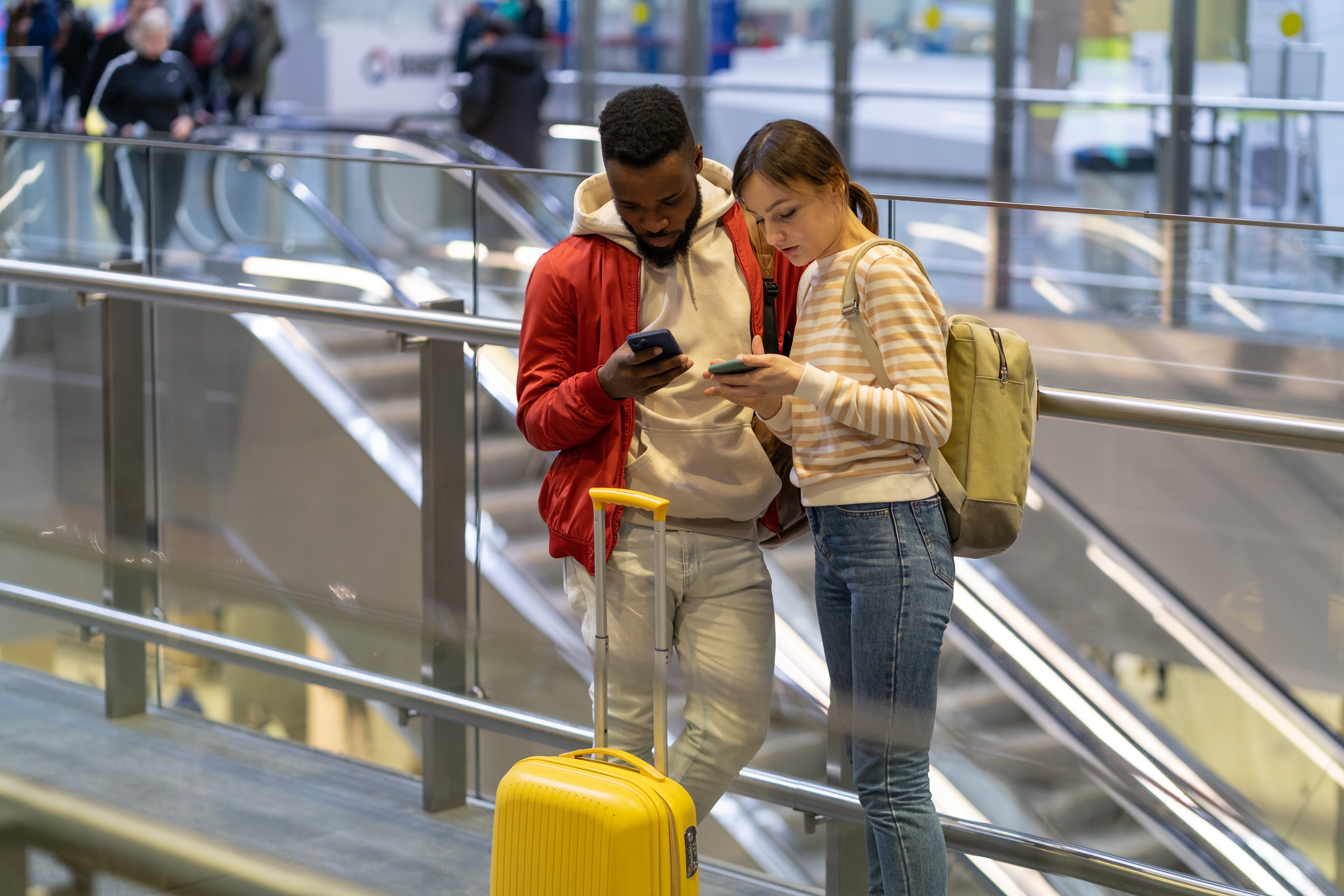14 Ways to Find Legitimate Flight Deals (Without Getting Scammed)
Cheap flights flood your inbox, pop up in ads, and tempt you with jaw-dropping prices. But in a world of fake sites, hidden fees, and too-good-to-be-true offers, how do you separate real deals from digital traps? Whether you're a seasoned traveler or booking your first big trip, knowing where—and how—to look is key. These 14 legit strategies will help you find true flight deals without falling for scams, gimmicks, or shady third-party detours.
1. Stick to Trusted Aggregators

Flight aggregators like Google Flights, Skyscanner, and Momondo are your best bet for scanning the skies without getting scammed. These platforms don’t actually sell you the tickets—they just pull data from hundreds of airlines and third-party sites, making it easier to compare prices across the board. Because they’re neutral, they’re not trying to funnel you into a specific provider. You’ll see price trends, fare calendars, and route maps without pressure or pop-up panic. Additionally, they often link directly to the airline or verified agencies, helping you steer clear of shady booking paths with hidden fees or fake deals.
2. Always Cross-Check with the Airline

Found a dirt-cheap fare on a travel site you trust? Good. Now head straight to the airline’s official website and see if the deal holds up. Airlines often match third-party prices—and sometimes offer better perks like seat selection or checked bags when booking directly. Plus, if anything goes wrong (think cancellations, delays, or rescheduling), it’s a lot easier to deal directly with the airline than a middleman. Price close enough? Book through the airline. You’ll thank yourself later when customer support actually answers, and your boarding pass isn’t tangled in third-party red tape.
3. Set Fare Alerts Early

If you're planning a trip more than a month out, fare alerts are your secret weapon. Apps like Hopper, Kayak, or Google Flights let you track specific routes and notify you when prices drop. This avoids the last-minute rush (and risk) of pouncing on the wrong deal under pressure. Set alerts for a few date ranges to spot patterns and compare trends over time. These tools use real-time data and predictive algorithms—meaning they’ll often catch price dips even before the airline launches a promo. It’s like having a pocket travel analyst watching the skies for you.
4. Use Incognito Mode or Clear Cookies

Ever notice how a flight you looked at yesterday suddenly costs more today? Dynamic pricing is real, and it’s often based on your browsing behavior. Travel websites can track your search history and location, then bump prices when they sense urgency. Using your browser’s incognito mode or clearing cookies resets your digital footprint, allowing you to see more consistent fares—without the artificial inflation. It's not a silver bullet, but it can protect you from subtle algorithmic manipulation. Bottom line—when searching flights, treat your browser like a clean slate. Your wallet might thank you.
5. Beware of Fake Lookalike Sites

Scammers know desperation is profitable. That’s why fake airline sites and booking pages mimic real ones—with slightly misspelled URLs, knockoff logos, or too-good-to-be-true prices. These traps often appear in social media ads or sketchy email promos. Once you enter your payment info, the site vanishes—or worse, charges you for a flight that doesn’t exist. To stay safe, always check the full URL, look for HTTPS encryption, and avoid clicking links from unverified sources. When in doubt, type the airline or aggregator name directly into your browser. Trust your gut—if it looks shady, it probably is.
6. Avoid Booking Through Unfamiliar Third Parties

If a booking site looks like it was named by an AI (“supercheaptickets247 dot biz”), don’t touch it. These low-budget third-party sites may promise big savings, but they often deliver headaches—poor customer service, hidden fees, or even fake itineraries. Always vet unfamiliar platforms on sites like Trustpilot or travel subreddits. If there’s no online footprint—or dozens of horror stories—walk away. You’re better off paying $20 more on a reputable site than losing your entire fare to a ghost company that never intended to get you on a plane.
7. Book with Credit Cards—Not Debit

When it comes to flights, credit cards aren’t just for points—they’re your safety net. Booking with a credit card gives you fraud protection, meaning if something goes wrong (like a fake ticket or a booking that never confirms), you can dispute the charge and get your money back. Debit cards don’t offer the same safeguards, and recovering funds can be slow—or impossible. Most travel-savvy flyers also use credit cards for perks like free insurance or lounge access. In the high-stakes game of online booking, a credit card is your best defense against scams and glitches.
8. Don’t Fall for “Act Fast” Pop-ups

“Only 1 seat left!” “2 people just viewed this flight!” “Deal expires in 5 minutes!” These are pressure tactics, not truths. While some deals are genuinely time-sensitive, most pop-ups are designed to trigger panic booking. Don’t take the bait. Always take a moment to verify the price on another site or directly with the airline. If it’s a real deal, it’ll hold long enough for a double-check. Fake urgency is a red flag, not a reason to rush. Smart travelers pause, cross-check, and avoid handing over their card to a countdown clock.
9. Check for Baggage and Seat Fees

Some flights look incredibly cheap—until you factor in bags, seat selection, and basic boarding privileges. Many low-cost carriers unbundle fares, meaning the ticket price covers little more than a seat assignment—if that. Before you book, check what’s included in the fare and what costs extra. Use comparison tools like Google Flights or Momondo that let you filter by total trip cost, not just the base fare. This helps you avoid “deals” that end up more expensive once you bring a bag, pick a seat, or want to sit next to someone you’re traveling with.
10. Subscribe to Deal Newsletters

One of the easiest ways to find real flight deals is to let someone else do the digging. Newsletters like Going (formerly Scott’s Cheap Flights), Airfarewatchdog, and Secret Flying scour the internet daily for legitimate fare drops, mistake fares, and limited-time promotions. These aren’t spam—they’re curated alerts from travel experts who vet every offer before sending. Free versions give you solid leads, while paid tiers often unlock premium deals or rare international fares. It’s a low-effort way to stay ahead of flash sales and avoid spending hours hunting for bargains yourself.
11. Learn the Basics of “Hidden City” Ticketing

Hidden city ticketing exploits quirks in airline pricing—booking a cheaper flight with a layover in your actual destination, then skipping the final leg. Sites like Skiplagged specialize in finding these loopholes. It can save serious money, but comes with caveats, such as—don’t check a bag (it’ll go to the final destination), and don’t use the trick roundtrip (your return leg might get canceled). Airlines frown on it and occasionally penalize frequent users. Use the method sparingly, know the risks, and always prioritize getting to your destination reliably over gaming the system.
12. Watch Out for “Voucher” Scams on Social Media

You’ve seen them—a viral post offering $500 flight vouchers for filling out a survey or “liking” a page. These scams prey on excitement and urgency, often mimicking major airlines with stolen logos or misspelled handles. Clicking through usually leads to phishing sites that harvest personal info or install malware. Always verify travel deals through the airline’s official site or trusted aggregators. If it looks like a gift but asks for sensitive information up front, it’s probably a trap. Free flights don’t come in DMs—they come from solid strategy and a little luck.
13. Double-Check Refund and Change Policies

In the post-pandemic world, flexibility is everything. Some of the cheapest fares come with no refunds, no rebooking, and no changes—meaning if you miss your flight or your plans shift, your money’s gone. Basic economy fares on many airlines are especially restrictive. Before booking, check the cancellation and change policies. Consider paying a bit more for a ticket that gives you flexibility—it’s often worth the peace of mind. Use filters that highlight flexible fares, especially if you’re booking months out. A $20 savings isn’t worth losing $200 down the line.
14. Use Tools Like ITA Matrix for Advanced Search

For serious deal hunters, ITA Matrix—created by Google—is the ultimate deep-dive search engine. It’s not user-friendly for beginners, but it allows custom filters like minimum layovers, multi-city pricing, and specific fare codes. It doesn’t sell tickets, but it shows you real-time prices airlines use internally. If you’re planning a complex trip or want to crack how fare systems work, learning ITA Matrix is a game-changer. Combine it with Google Flights to find the ticket, then book through a trusted platform. This is next-level strategy—but one that pays off big if you’re willing to learn.
Flight deals don’t have to be a gamble. With the right tools, a little patience, and a healthy dose of skepticism, you can travel smart—and save big—without falling into a trap. Real deals don’t come with pressure tactics or fine-print trickery. They come from knowing how, when, and where to look.








